


Framed or unframed, desk size to sofa size, printed by us in Arizona and Alabama since 2007. Explore now.
Shorpy is funded by you. Patreon contributors get an ad-free experience.
Learn more.

- Tough Guys
- Lost in Toyland
- And without gloves
- If I were a blindfolded time traveler
- Smoke Consumer Also Cooks
- Oh that stove!
- Possibly still there?
- What?!?
- $100 Reward
- Freeze Frame
- Texas Flyer wanted
- Just a Year Too Soon
- WWII -- Replacing men with women at the railroad crossing.
- Yes, Icing
- You kids drive me nuts!
- NOT An Easy Job
- I wonder
- Just add window boxes
- Icing Platform?
- Indiana Harbor Belt abides
- Freezing haze
- Corrections (for those who care)
- C&NW at Nelson
- Fallen Flags
- A dangerous job made worse
- Water Stop
- Passenger trains have right of way over freights?
- Coal
- Never ceases to amaze me.
- Still chuggin' (in model form)
Print Emporium
Lewis Hine
Re-Becca: 1909
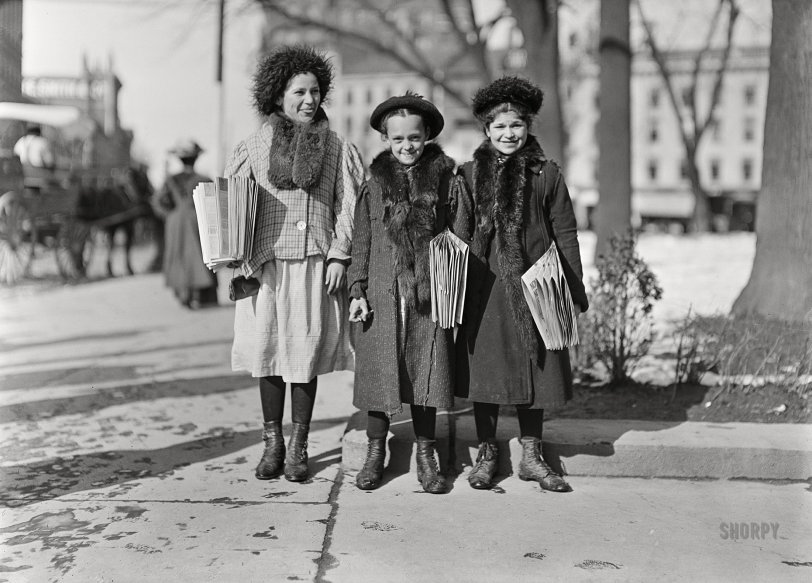
March 1909. A trio of Hartford, Connecticut, newsies. "Have been selling two years. Youngest, Yedda Welled, is 11 years old. Next, Rebecca Cohen, is 12. Next, Rebecca Kirwin, is 14." Glass negative by Lewis Wickes Hine for the National Child Labor Committee. View full size.
- 2 comments
- 8191 reads
Powerhouse: 1921
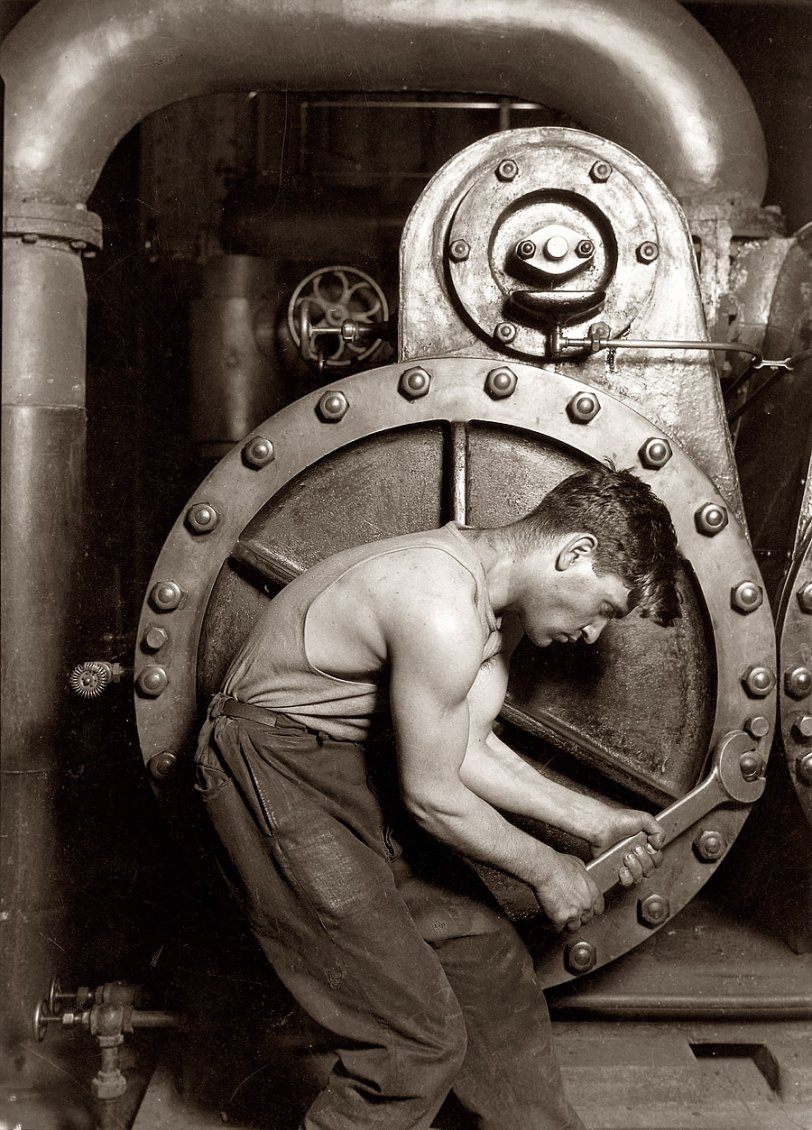
On this Labor Day 2021, Shorpy wishes everyone a meaningful and at least momentary break from toil.
"Powerhouse Mechanic and Steam Pump" (1921). One of Lewis Wickes Hine's celebrated "work portraits" made after his decade-long project documenting child labor. View full size.
- 21 comments
- 127151 reads
Carnival Ride From Hell: 1911
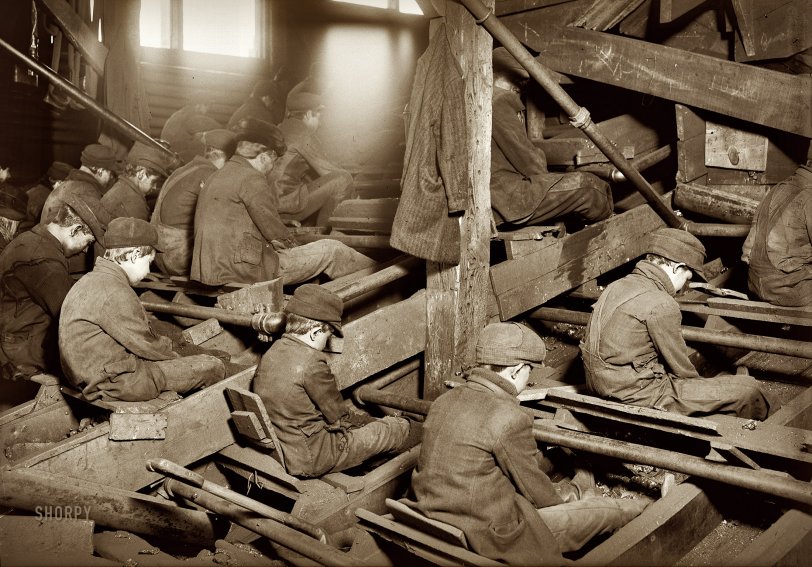
January 1911. South Pittston, Pennsylvania. "A view of the Pennsylvania Breaker. 'Breaker boys' remove rocks and other debris from the coal by hand as it passes beneath them. The dust is so dense at times as to obscure the view and penetrates the utmost recesses of the boys' lungs." Photo by Lewis Wickes Hine. View full size.
From the 1906 book The Bitter Cry of the Children by labor reformer John Spargo:
Work in the coal breakers is exceedingly hard and dangerous. Crouched over the chutes, the boys sit hour after hour, picking out the pieces of slate and other refuse from the coal as it rushes past to the washers. From the cramped position they have to assume, most of them become more or less deformed and bent-backed like old men. When a boy has been working for some time and begins to get round-shouldered, his fellows say that “He’s got his boy to carry round wherever he goes.”
- 20 comments
- Read more
- 89991 reads
Breaker Boys: 1911
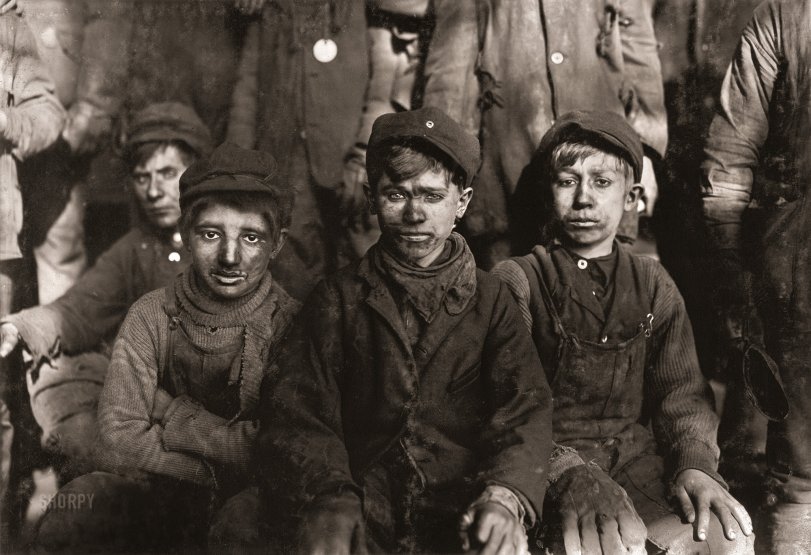
January 1911. "Group of boys working in No. 9 Breaker. Pennsylvania Coal Co., Hughestown Borough, Pittston, Pennsylvania. Smallest is Sam Belloma, Pine Street." Photograph by Lewis Wickes Hine for the National Child Labor Committee. View full size.
- 4 comments
- 12024 reads
Tobacco Tim: 1917
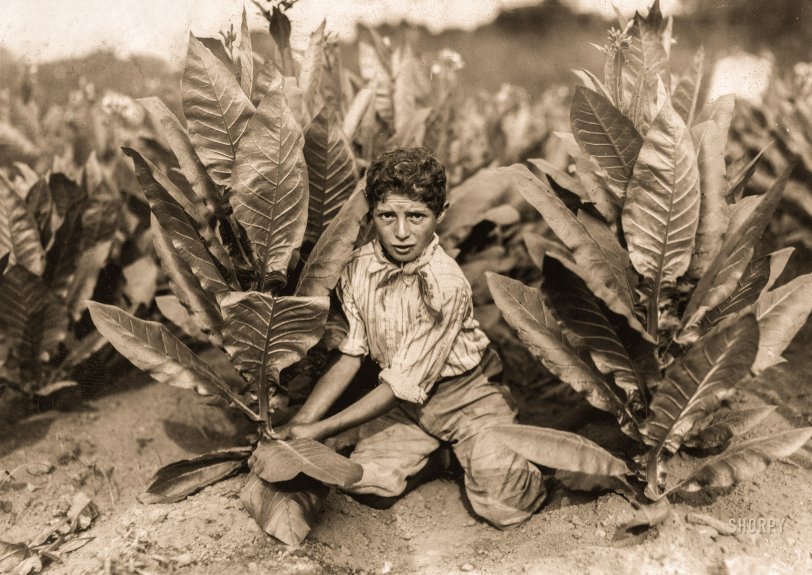
August 6, 1917. "10 year old picker on Gildersleeve Tobacco Farm. Gildersleeve, Connecticut." Photo by Lewis Wickes Hine for the National Child Labor Committee. View full size.
- 4 comments
- 10454 reads
Bowdoin Boot-Blacks: 1909
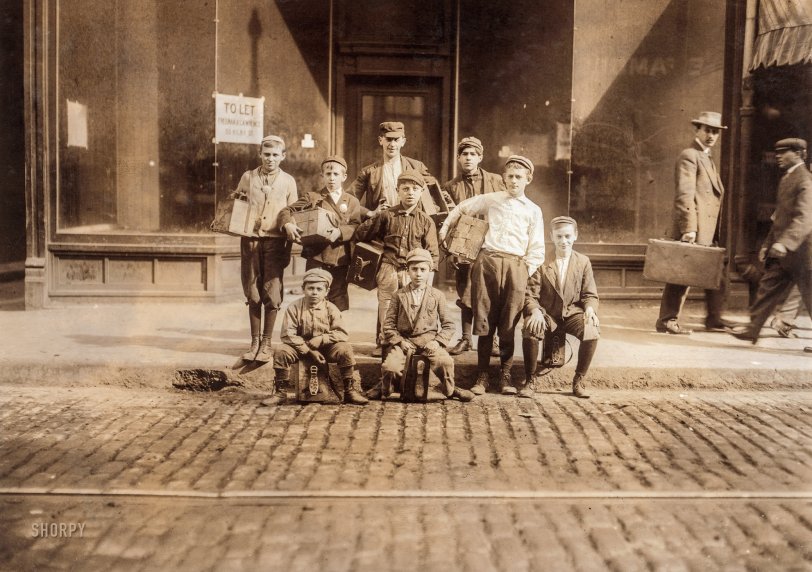
October 1909. "A Group of Boot-Blacks in Bowdoin Square, a Passing Juvenile Industry. Location: Boston, Massachusetts." Photograph by Lewis Wickes Hine. View full size.
- 1 comment
- 9434 reads
The Apprentice: 1917
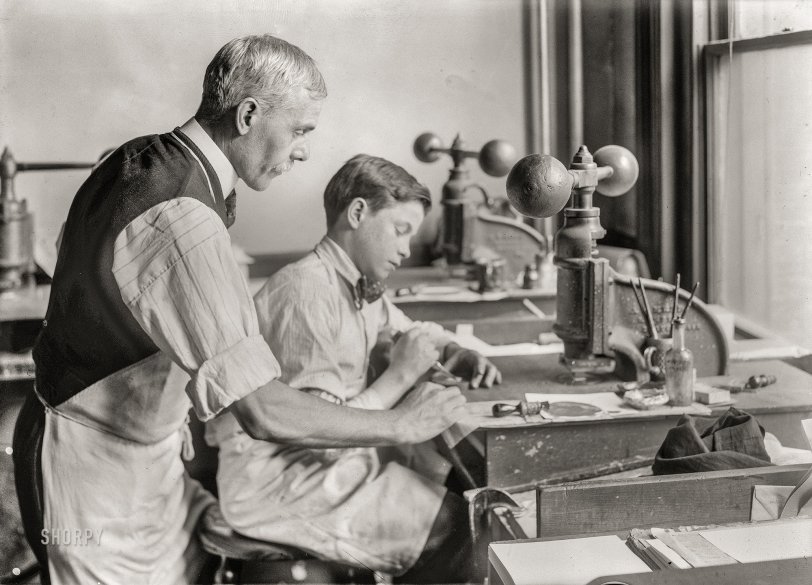
Jan. 30, 1917. "14-year old Fred cutting dies for a new job. Embossing shop of Harry C. Taylor. 61 Court Street, Boston, Mass." 5x7 inch glass negative by Lewis Wickes Hine. View full size.
- 6 comments
- 10338 reads
The Gleaners: 1910
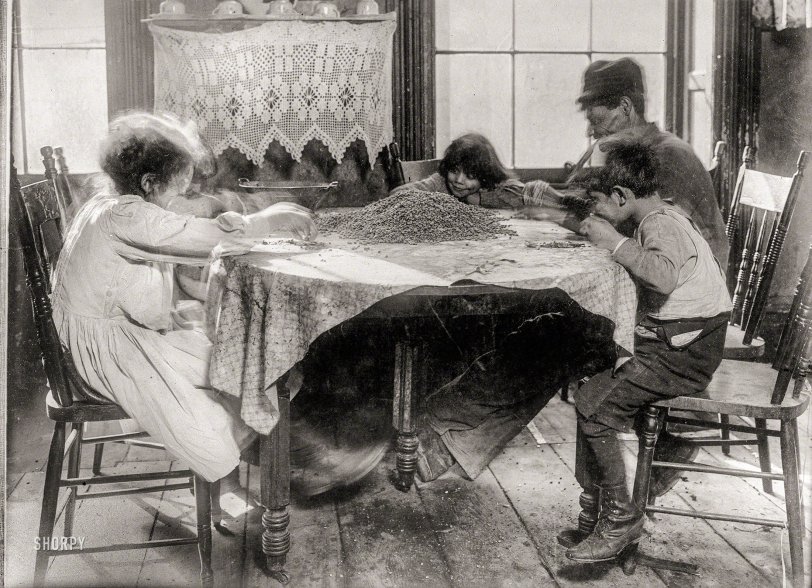
February 1910. "10 a.m. Saturday. 36 Laight Street, New York. Florence Lieto, 10 years old; Jennie Macola, 10 years old (hidden); Mamie Macola, 8; Nicholas Macola, 6. Picking coffee sweepings. The sweepings cost 25 cents a sack at the warehouse, and picked-over coffee sells at about 12 cents a pound. Man working with sore hand tied up in bandage. Children work after school hours and on Saturdays." Photo by Lewis Wickes Hine. View full size.
- 6 comments
- 11548 reads
Judges Avert Probe: 1913
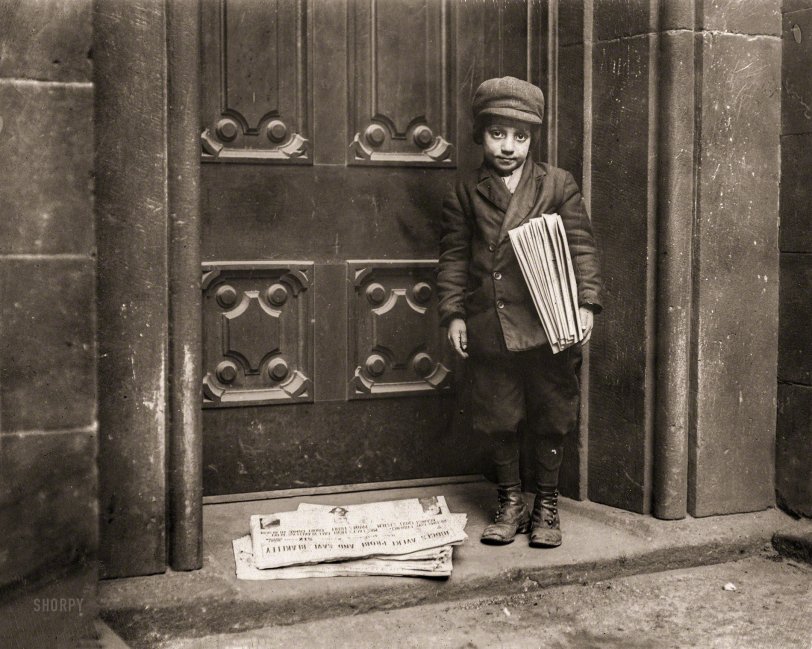
"Newsboy, 1913. No caption card found. Date based on captions for neighboring numbers. 'Pittsburg' may be in text at top of newspaper on ground, but neighboring newsboy photos taken in New York. Headline appears to be 'Judges Avert Probe and Save Blakeley'." Photo by Lewis Wickes Hine for the National Child Labor Committee. View full size.
- 2 comments
- 8884 reads
A Double Shot: 1909
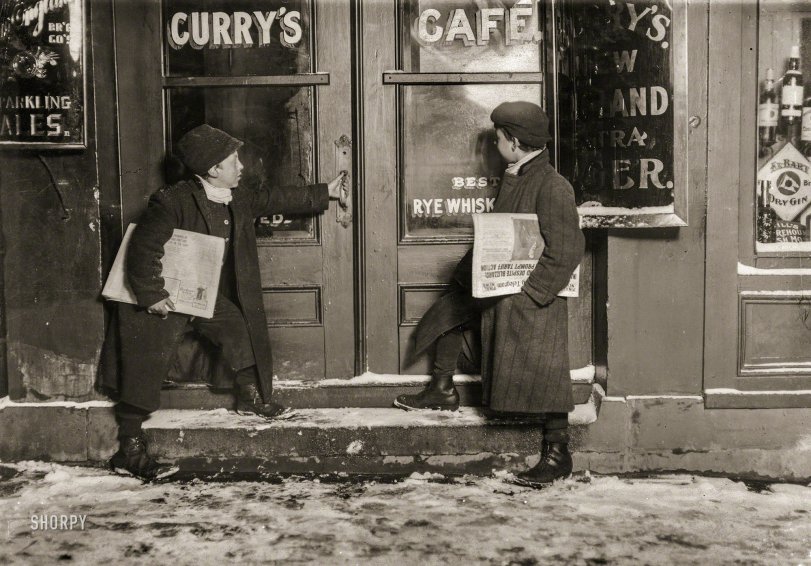
March 1909. Hartford, Connecticut. "9:30 P.M. A common case of 'team work.' Smaller boy (Joseph Bishop) goes into saloon and sells his last papers. Then comes out and his brother gives him more. Joseph said, 'Drunks are me best customers. I sell more'n me brudder does. Dey buy me out so I kin go home.' He sells every afternoon and night. Extra late Saturday. At it again at 6 A.M. Sunday." Photo by Lewis Wickes Hine for the National Child Labor Committee. View full size.
- 6 comments
- 9645 reads
Cherryville Warper: 1908
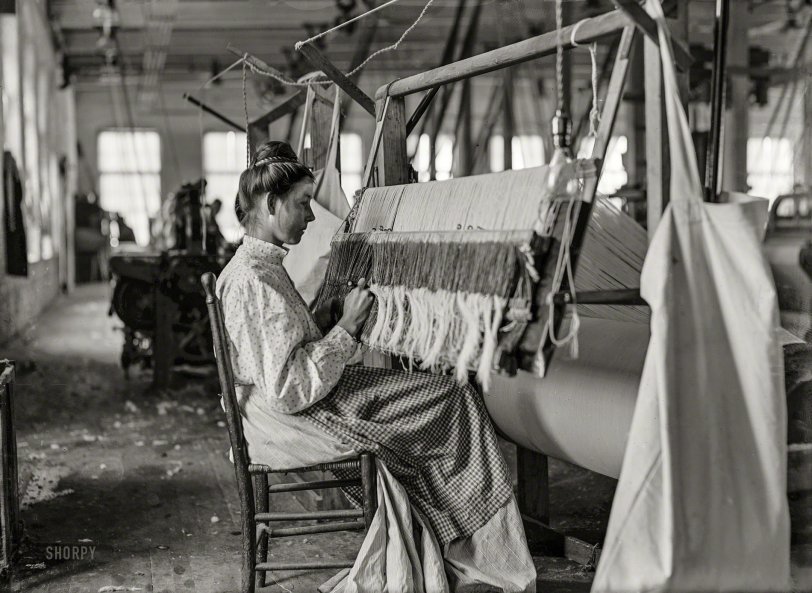
November 1908. "Woman at beam warper. Melville Mfg. Company, Cherryville, North Carolina." 5x7 glass negative by Lewis Wickes Hine. View full size.
- 1 comment
- 7867 reads
Back-Ropers: 1909
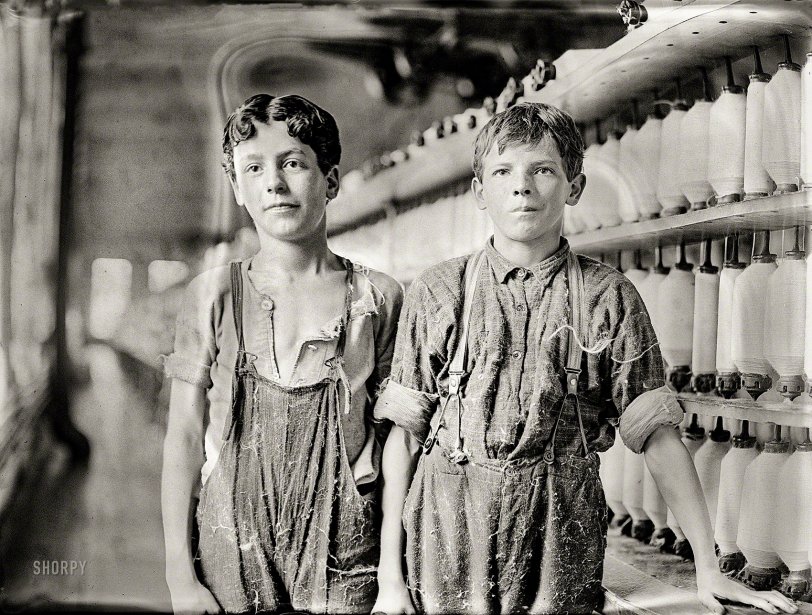
May 1909. "Leopold Daigneau and Arsene Lussier, 'back-roping boys' in mule-spinning room at Chace Cotton Mill, Burlington, Vermont." Glass negative by the child-labor reformer Lewis Wickes Hine. View full size.
- 1 comment
- 8496 reads
Sunshine & Shadow: 1916
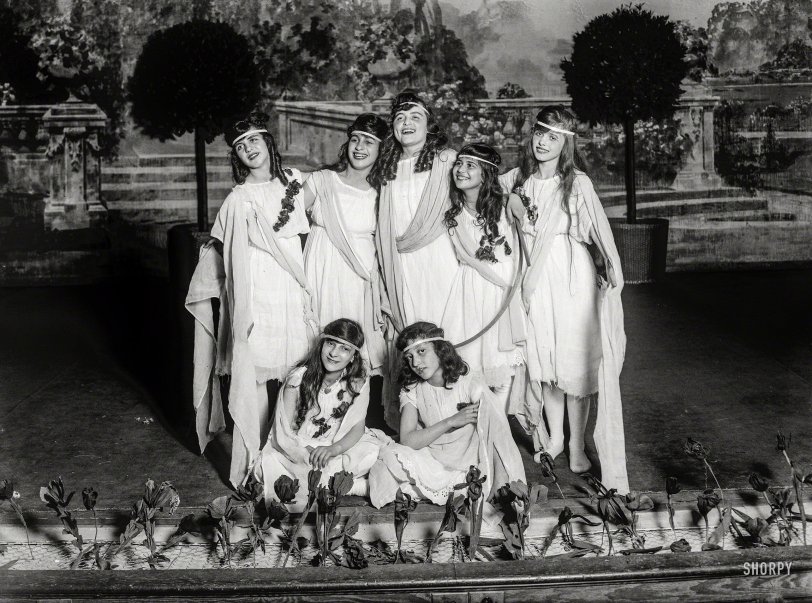
June 5, 1916. New York. "Miss Mackay's pageant Children of Sunshine and Shadow (with the hoop symbolizing 'Play') as presented at Washington Irving High School." Glass negative by Lewis Wickes Hine. View full size.
- 2 comments
- 7992 reads
Gutterball U.: 1910
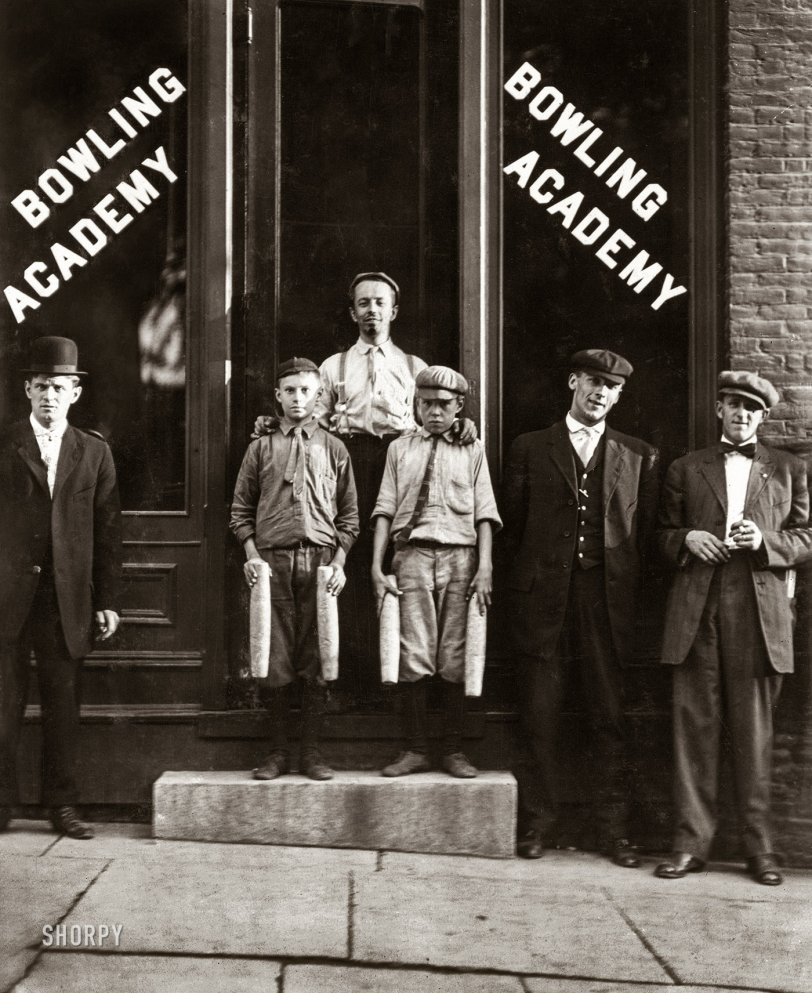
September 1910. Burlington, Vermont. "Two of the 'pin boys' working in Bowling Academy with three other small boys until 10 or 11 p.m. some nights." One of our astute commenters noticed this place just two doors over from the hotel seen here, and made the connection to Lewis Hine, who took this photo, as well as the pictures of Shorpy.com's namesake coal miner. View full size.
- 7 comments
- 7738 reads
Wee Lads: 1910
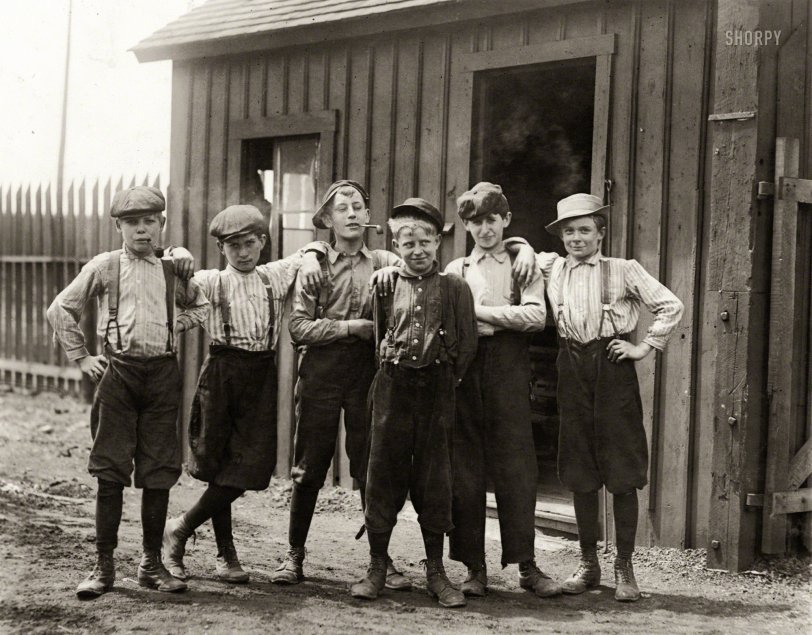
May 1910. "Noon hour at Obear-Nestor Glass Co., East St. Louis, Illinois. Names of the smallest boys are: Walter Kohler, 981 N. 18th Street; Walter Riley, 918 N. 17th Street; Will Convery, 1828 Natalie Avenue; Clifford Matheny, 1927 Summit Avenue. All employed at the glassworks." Photo by Lewis Hine. View full size.
- 6 comments
- 10327 reads























